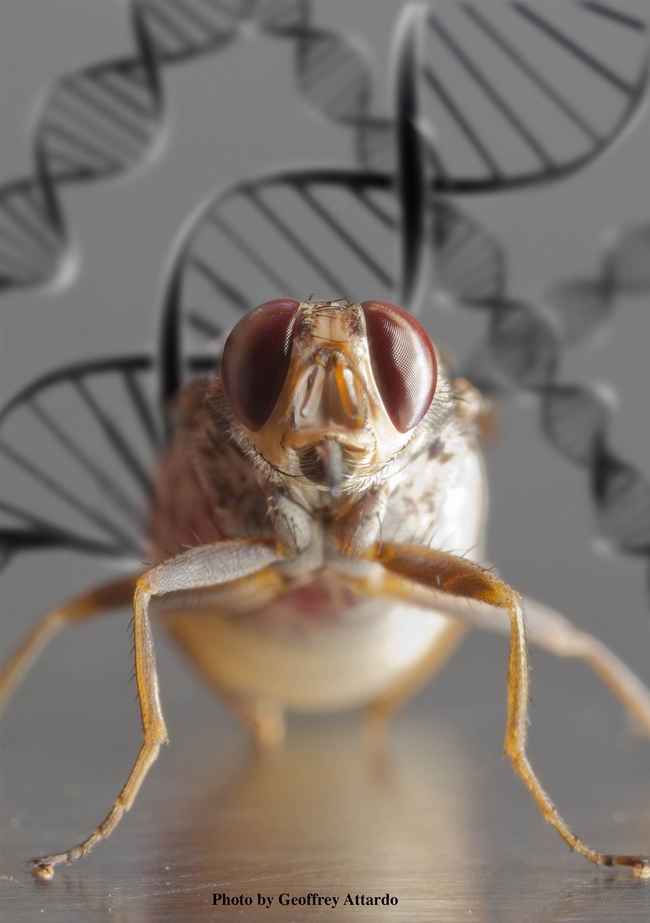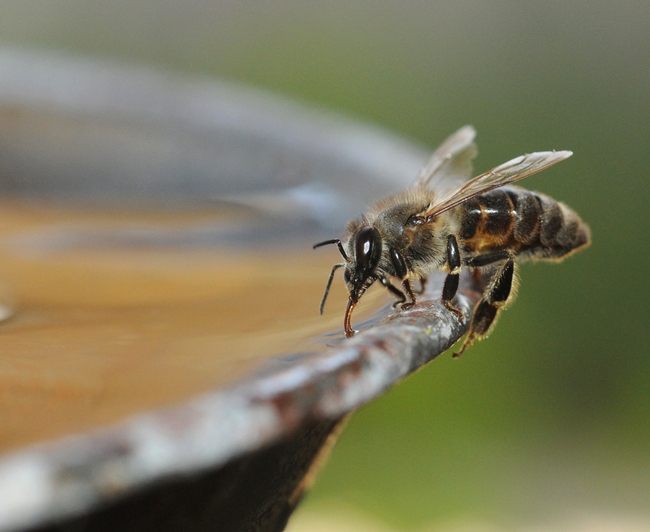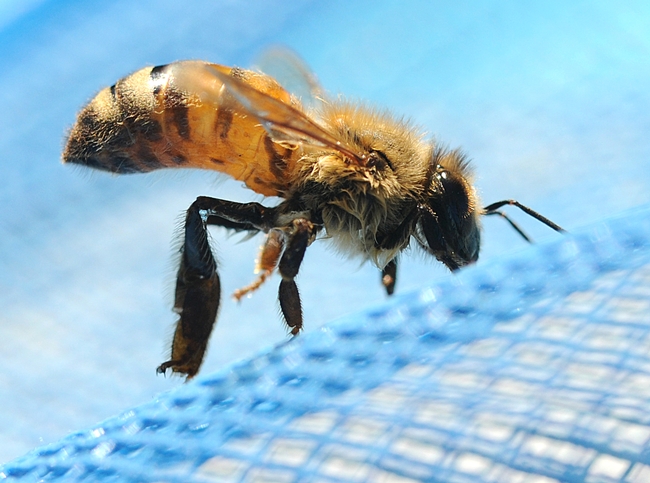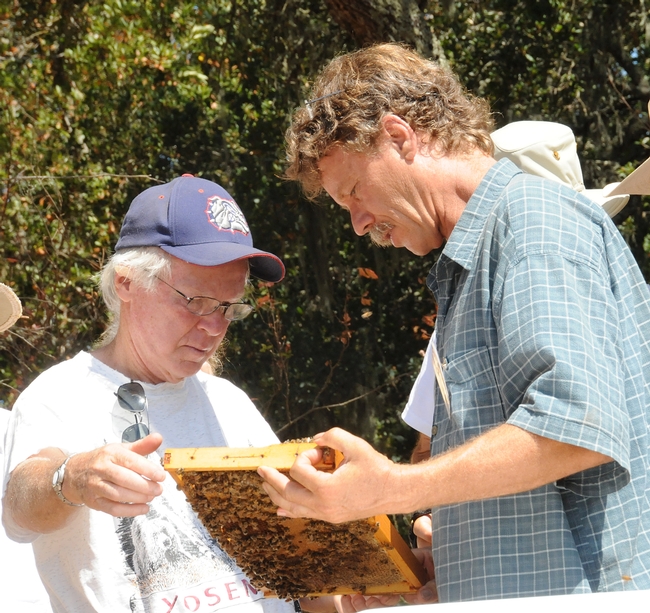Posts Tagged: PBS
Geoffrey Attardo's Tiny Subjects Drawing Large-Scale Attention
UC Davis medical entomologist-geneticist Geoffrey Attardo's tiny research subjects in Tupper Hall are receiving widespread attention on a very large scale. In less than 48 hours, nearly 500,000 people have seen them—but not in his...

This is the tsetse fly, Glossina morsitans morsitans, that Geoffrey Attardo researches in his UC Davis lab. (Photo by Geoffrey Attardo)
Why Do Honey Bees Die When They Sting
"Why do honey bees die when they sting?" That's the question PBS Newshour asked Extension apiculturist (retired) Eric Mussen of the UC Davis Department of Entomology and Nematology for its "Just Ask" feature. Mussen, who retired in June after 38...

A honey bee embeds its stinger in the wrist of Eric Mussen and then tries to pull away. Note the abdominal tissue trailing. (This is an actual photo of a bee sting; it was not posed.) (Photo by Kathy Keatley Garvey)

The bee has pulled away to die, leaving the stinger and abdominal tissue behind. (Photo by Kathy Keatley Garvey)
Why Are the Bees in the Pool?
The declining bee population: Does chlorine in a swimming pool have anything to do with it? Chlorine? Ever since PBS NewsHour correspondent Spencer Michels interviewed Extension apiculturist Eric Mussen of the UC Davis Department of Entomology and...

Honey bee drinking water. (Photo by Kathy Keatley Garvey)

Drenched bee fished out of a swimming pool. (Photo by Kathy Keatley Garvey)
Honey Bees Still in Trouble
Honey bees are still in trouble.University of California scientists hammered home that point tonight during the PBS NewsHour program on the colony collapse disorder (CCD) and the declining bee population. Extension apiculturist Eric Mussen of the UC...

Beekeepers Bill Cervenka (left) of Half Moon Bay and Randy Oliver of Grass Valley check out a frame in Healdsburg during a bee conference.. (Photo by Kathy Keatley Garvey)

